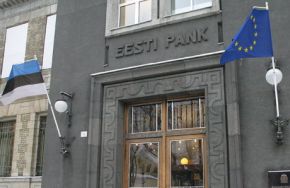Banks, Energy, Estonia, EU – Baltic States, Financial Services, Markets and Companies
International Internet Magazine. Baltic States news & analytics
Thursday, 18.12.2025, 09:12
Eesti Pank may begin to buy bonds of state-owned companies
 Print version
Print version |
|---|
Eesti Pank President Ardo Hansson said that according to the base scenario, each state’s central bank will start buying its state bonds. Estonia has no state bonds, which means that Eesti Pank has to buy some other securities.
"One possibility is that, to some extent, the so-called European supranational bonds, such as the European Investment Bank or the EFSF (European Financial Stability Fund) bonds can be bought," Hansson said. "Since we cannot buy these to cover the entire program, the question is whether we can buy bonds of Estonian state-owned companies or have to buy bonds of another country. It is still being discussed, but I think that these bonds could be bought," he added.
Two Estonian state-owned companies – Eesti Energia and Elering – have issued bonds and they are traded on the London Stock Exchange. Eesti Energia has issued Eurobonds twice, a total of 700 million euros worth, Elering has one issue, sized 225 million euros. If the European Central Bank agrees that the government bond purchase program is extended to the state-owned enterprises, Eesti Pank could buy securities of the two companies for a total of 231.25 million euros due to restrictions set on these purchases.
The European Central Bank's bond purchase program volume is 60 billion euros per month or a total of 1.14 trillion euros.
Eesti Pank’s share would be 136.95 to 142.43 million euros a month, which makes a total of 2.6-2.7 billion for the entire period.
Hansson stressed that the program is not risk-free and the central bank has tried to increase its risk buffers.








 «The Baltic Course» Is Sold and Stays in Business!
«The Baltic Course» Is Sold and Stays in Business!

